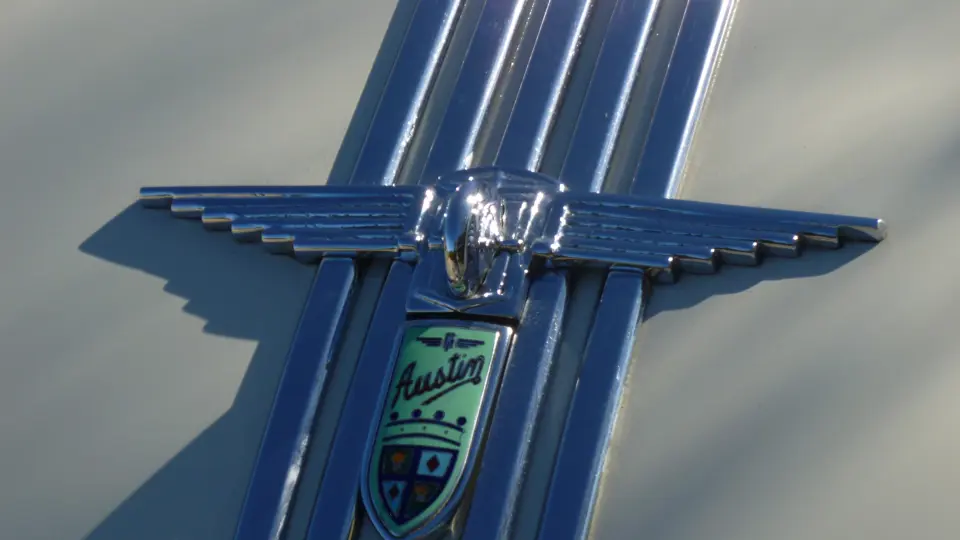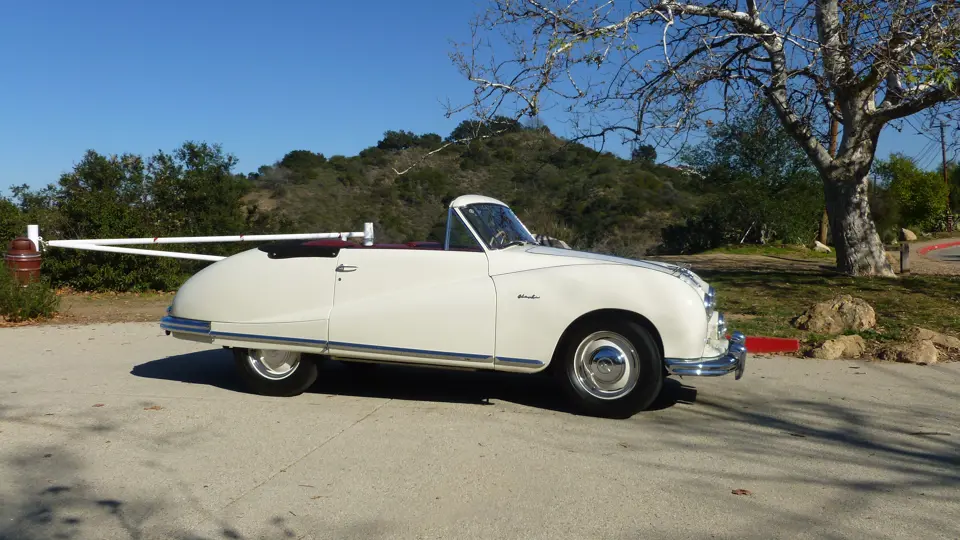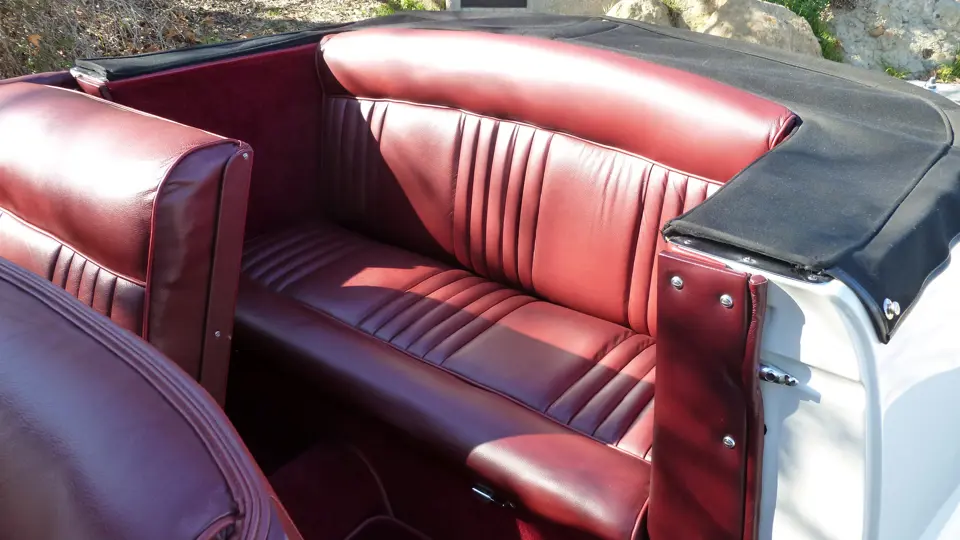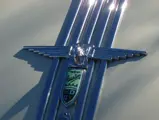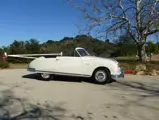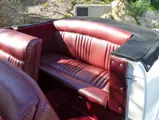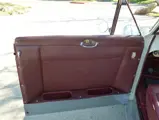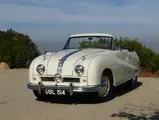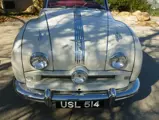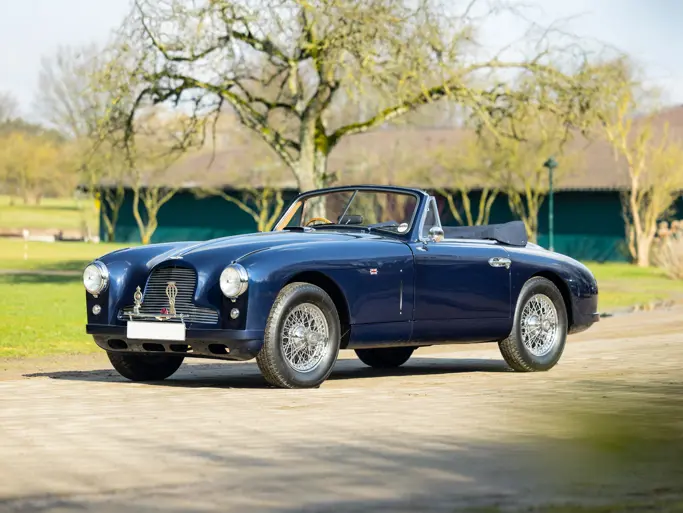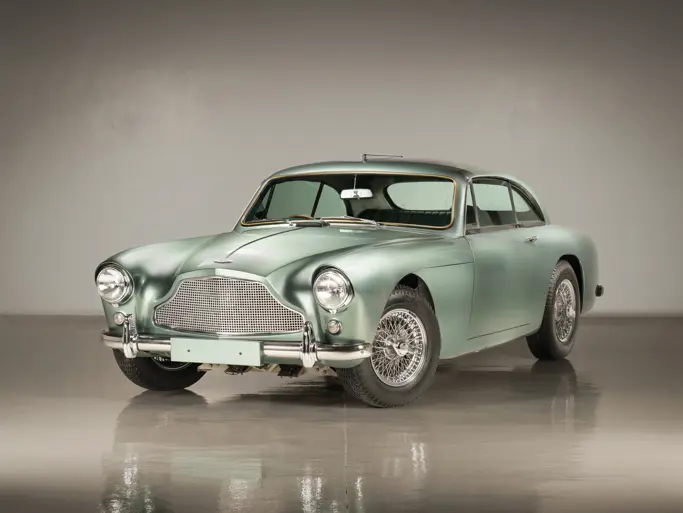88 bhp, 2,660 cc OHV inline four-cylinder engine, four-speed manual transmission, coil spring independent front suspension, live rear axle with semi-elliptic leaf springs, and hydraulic front, mechanical rear drum brakes. Wheelbase: 96"
• Rare transatlantic model Austin
• San Francisco show car
• High-quality British restoration
After World War II, the watchword for British industry was “export or die.” The Austin Motor Company did its part, targeting the American market where postwar optimism and prosperity reigned. Austin managers reasoned that a car developed especially for Americans should do very well. Thus was born the Austin Atlantic, intended to be sold mainly across that ocean. Styling was paramount, so a new envelope body was developed. The chassis used existing components, including a long-stroke version of the two-liter engine from the upscale Hampshire and Hereford models, a column-shifted four-speed and the hydro-mechanical brakes that were common in postwar Britain. Its American appeal was enhanced with hydraulically-operated power windows and top. With but 350 sales in America, out of 7,981 in total, the Austin Atlantic was discontinued in 1952.
This Austin Atlantic is believed to have been the 1949 San Francisco show car. Its windshield still bears decals from the selling dealer, Kjell Qvale’s British Motor Car Company in San Francisco. Qvale, a Norwegian-American businessman, pioneered the importation of British cars on the West Coast. Surviving documents show the car spent its early years in southern California. In the early 2000s it returned to England for a frame-off restoration by Geoff Makinson, at which time it acquired the age-related UK registration USL514. It subsequently returned to the U.S., splendidly presented in Wimbledon White with a red leather interior. It comes with extensive documentation, including a Heritage certificate showing its production for North American delivery on September 13, 1949, sales literature, magazines and a photographic record of the restoration.
Austin’s greater success in America would come with the Austin-Healey. This rare car, however, offers a glimpse at the postwar prosperity that might have been.




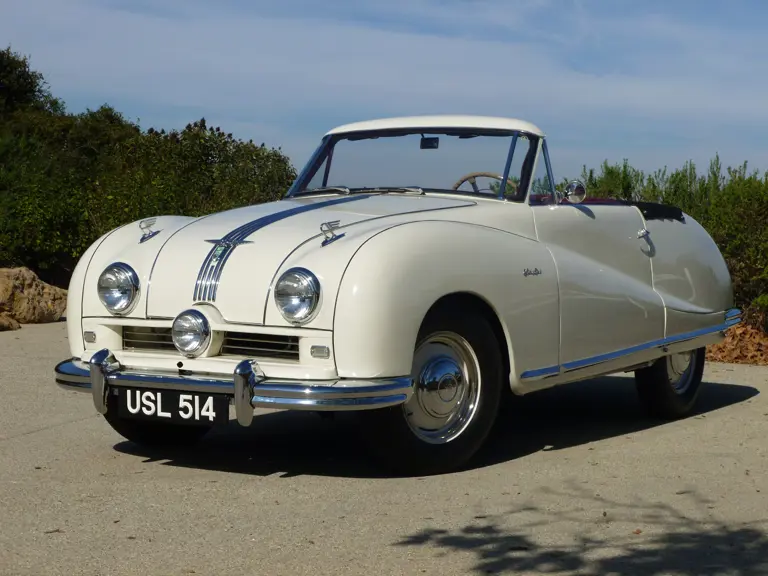
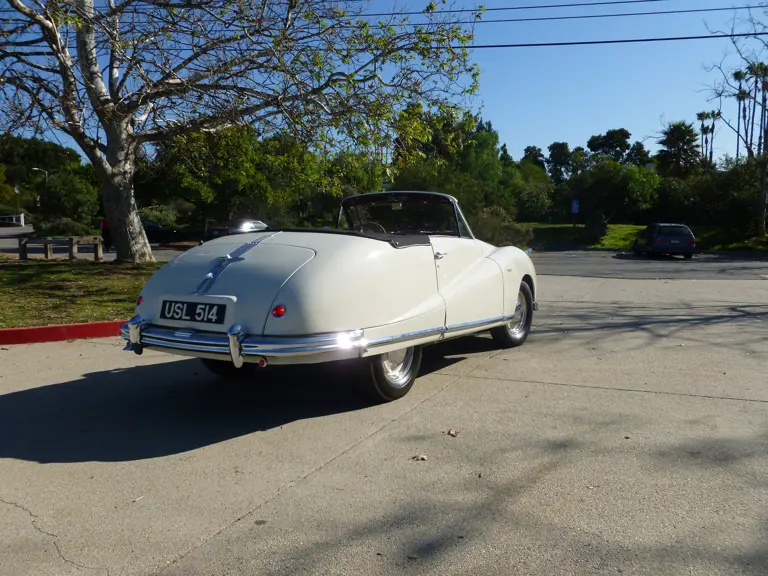
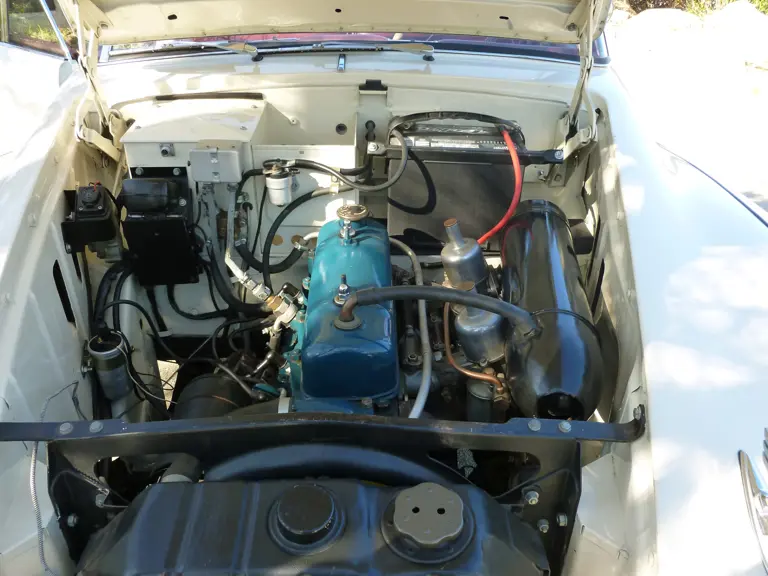
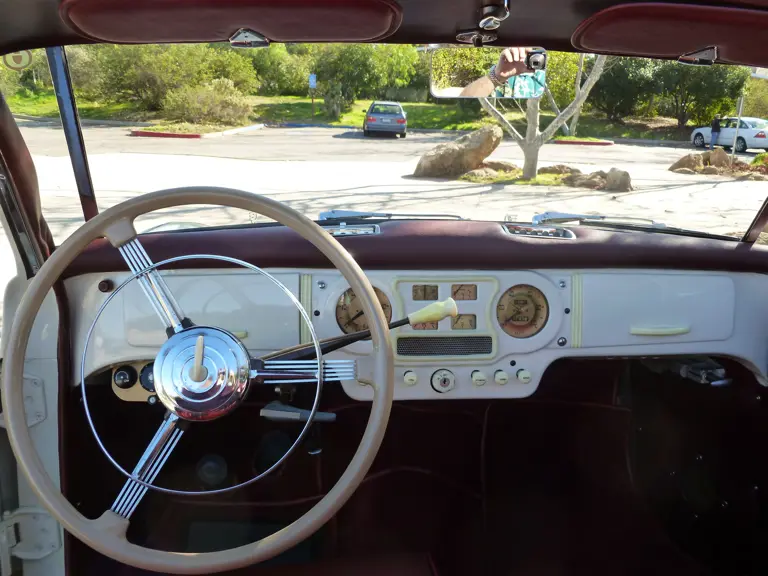
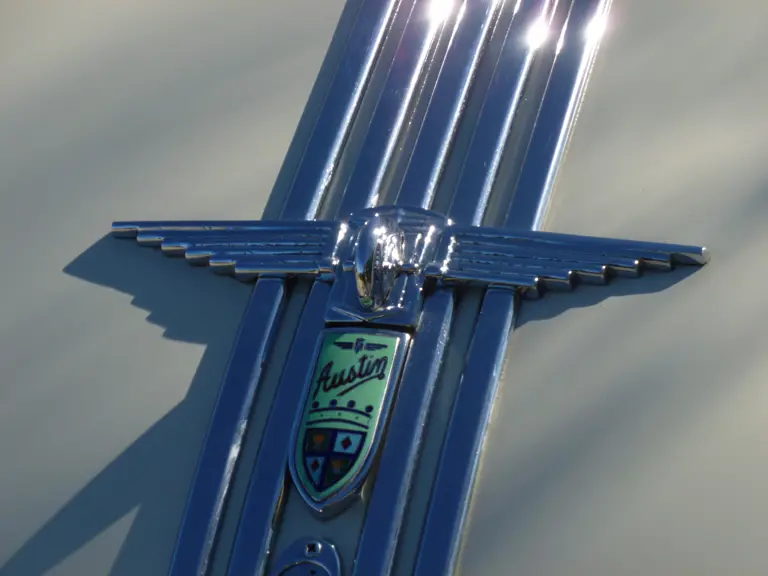
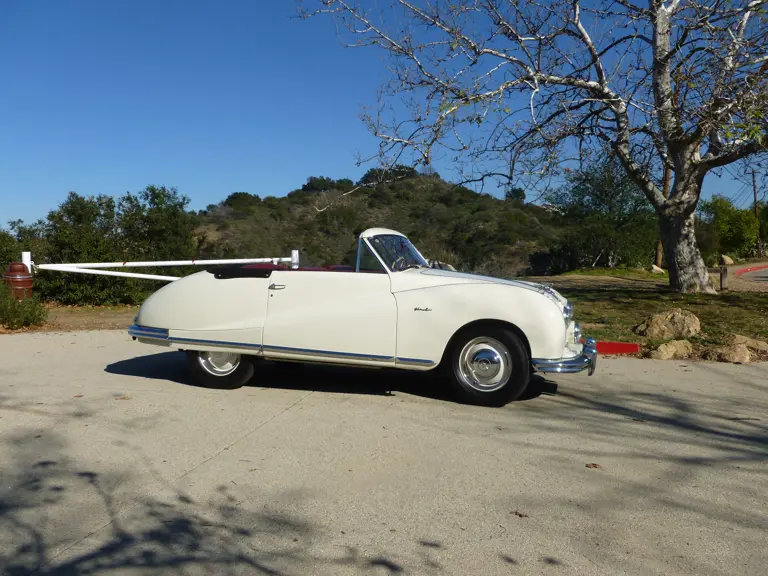

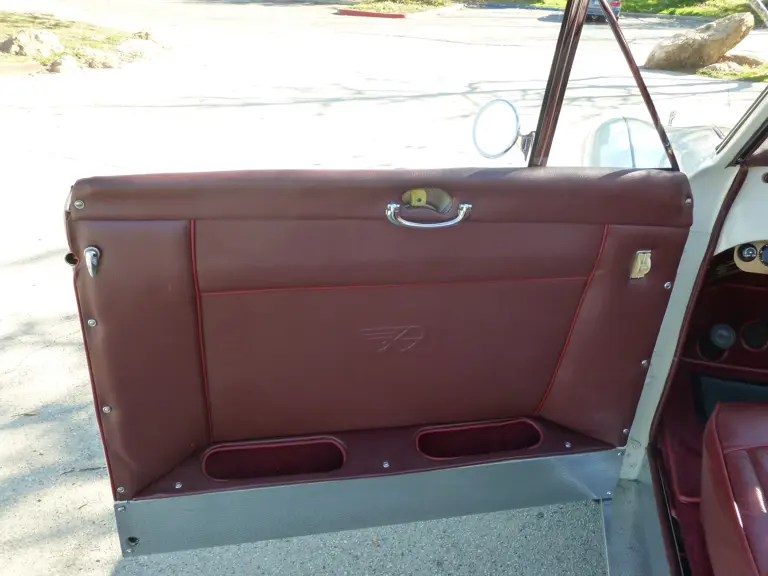

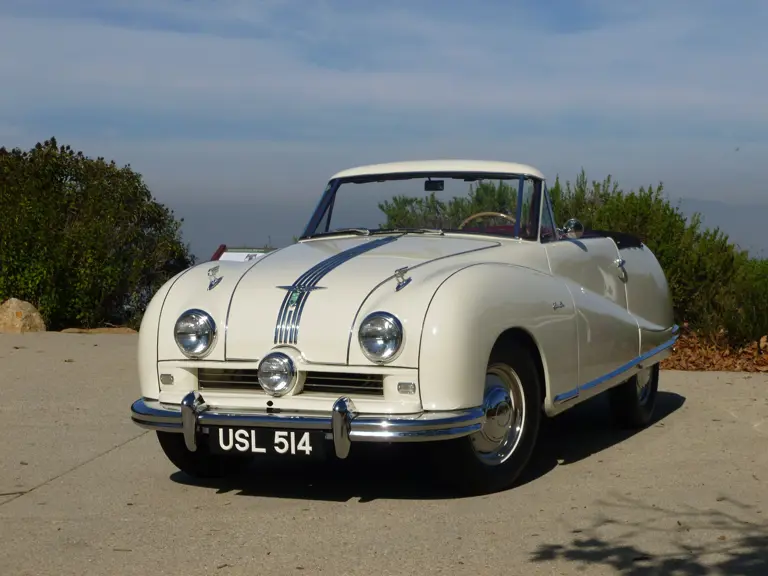

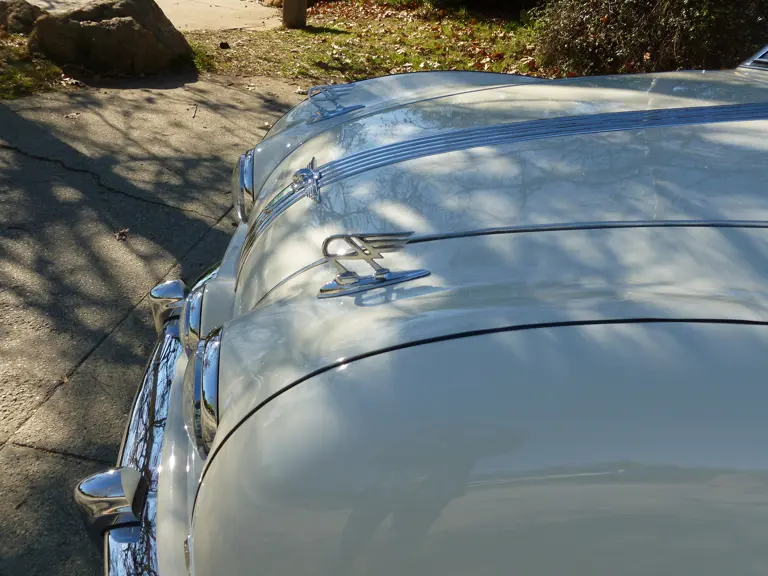
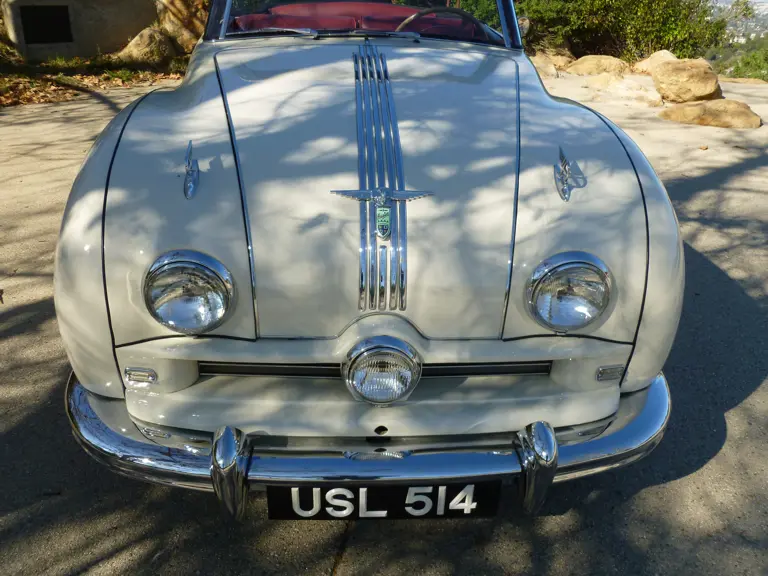

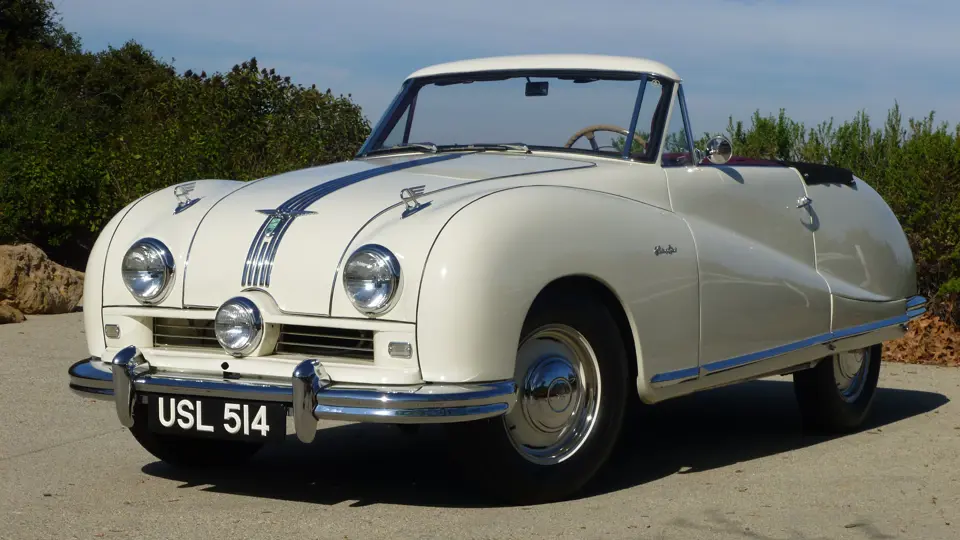
 | Amelia Island, Florida
| Amelia Island, Florida
